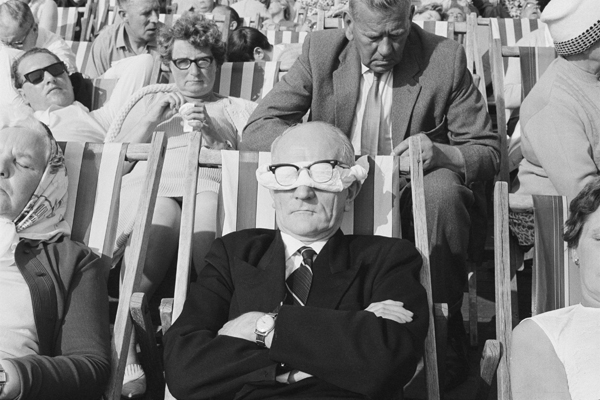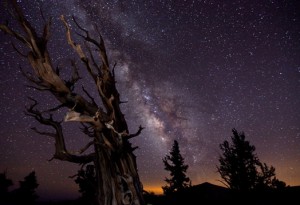Photocritic can be found in lots of places of the Intergoogles. Did you know that we have a Tumblr, which covers competitions, exhibitions, and publications?
Bridging the past: hybrid images of London
The Museum of London released 16 gorgeous and ghostly images of London today merged with London of yesterday to mark the launch of its revamped app. To celebrate the Bridge exhibition, which runs until 2 November 2014, the museum has continued this historically creative adventure by releasing 16 images of London's bridges, spanning from present to past.
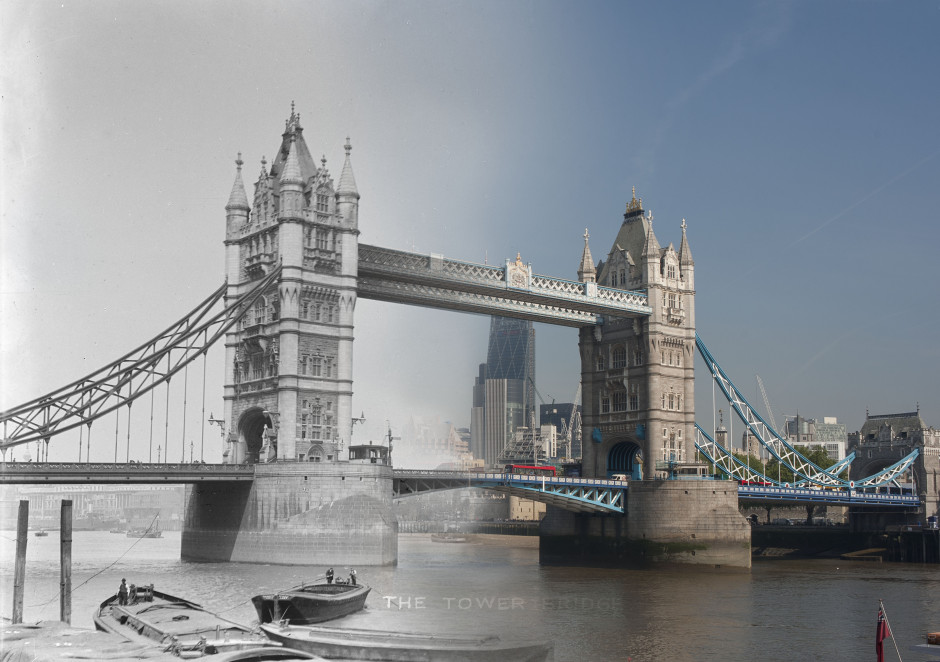
The original images, which are all part of the museum's photography collection, were shot in the 19th and 20th centuries. Their photographers include: Henry Grant, Henry Turner, Sandra Flett, Christina Broom, Roger Mayne, and George Davison Reid. They depict Tower Bridge c. 1903-10; the demolition of Old Waterloo Bridge c. 1934; Albert Bridge c. late 19th century; London Bridge c.1937; and the view of London’s skyline from Tower Bridge c.1930, among others.
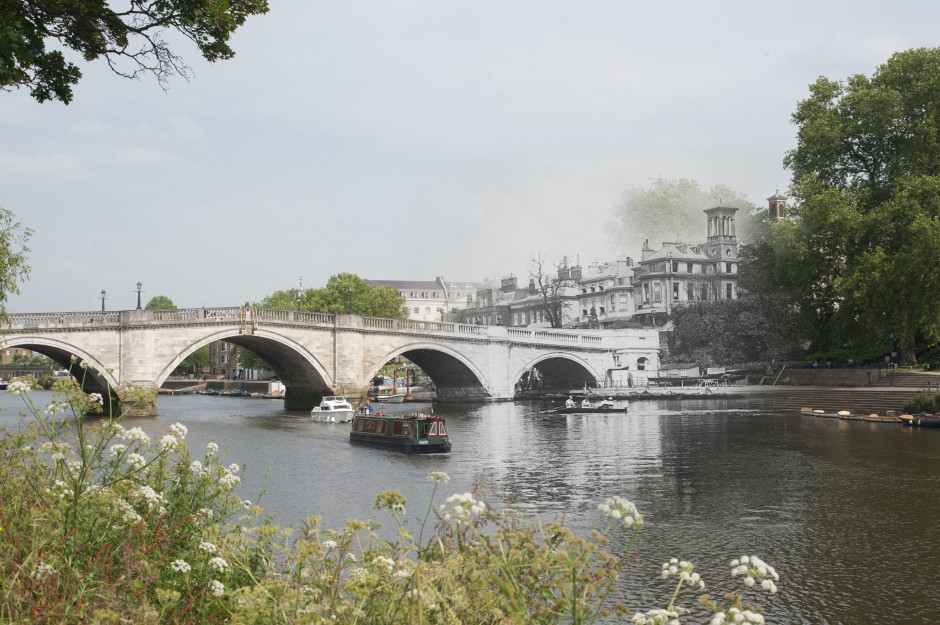
Francis Marshall, curator of the Bridge exhibition says: 'Contrasting historic shots with those of today allows us to see how the city has changed over time. Or in some cases, how it has remained the same.'
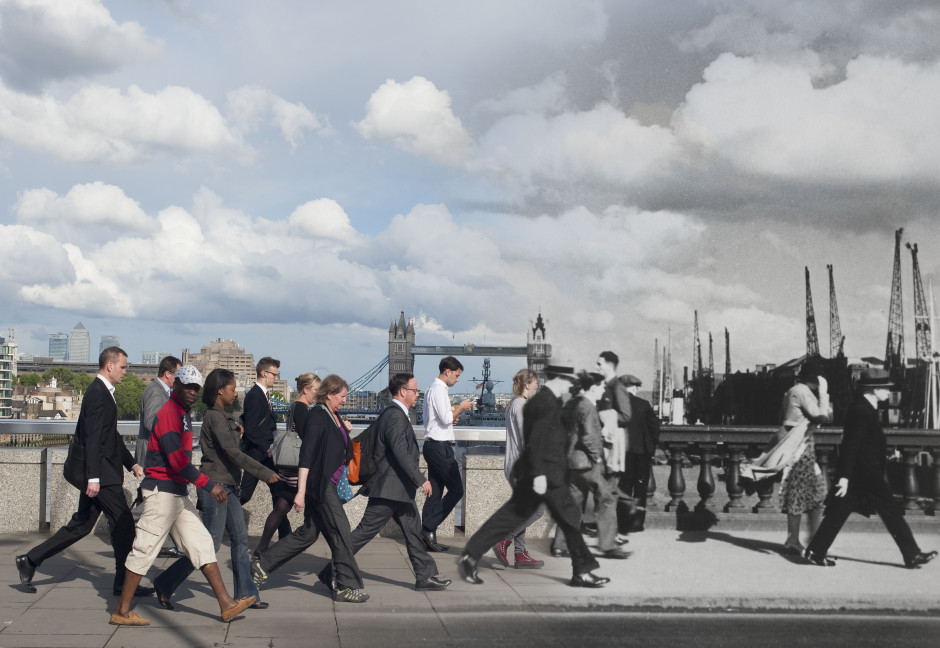
You can see all of the images at the Bridge exhibition at the Museum of London Docklands. It's free!
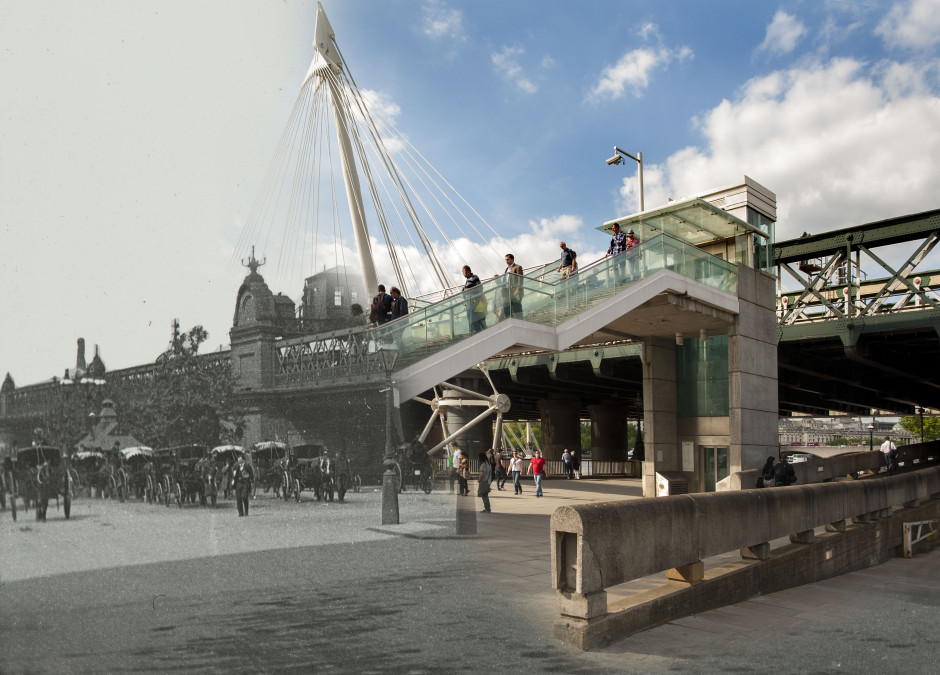
For one month only: an 1845 Fox Talbot salt print on display at the Museum of London Docklands
Any exhibition opening is exciting for the curation team behind it, but the Museum of London is particularly excited about its forthcoming exhibition Bridge, which opens at the Docklands branch of the organisation on 27 June. Bridge will feature the oldest photograph in the museum's collection, William Henry Fox Talbot's Old Hungerford Bridge, a salt print made in 1845. The print has never been exhibited by the museum until now, owing to its fragile condition and its special place in photographic history.
While Fox Talbot worked on developing the photographic process throughout the 1830s, it wasn't until 1845 that he made his major breakthrough that allowed photographs to be successfully fixed in a way that wasn't so hit-and-miss. This was a precursor to the development process that was used until the advent of digital photography. And Old Hungerford Bridge would have been one of the first negative-to-positive images fixed in this way.
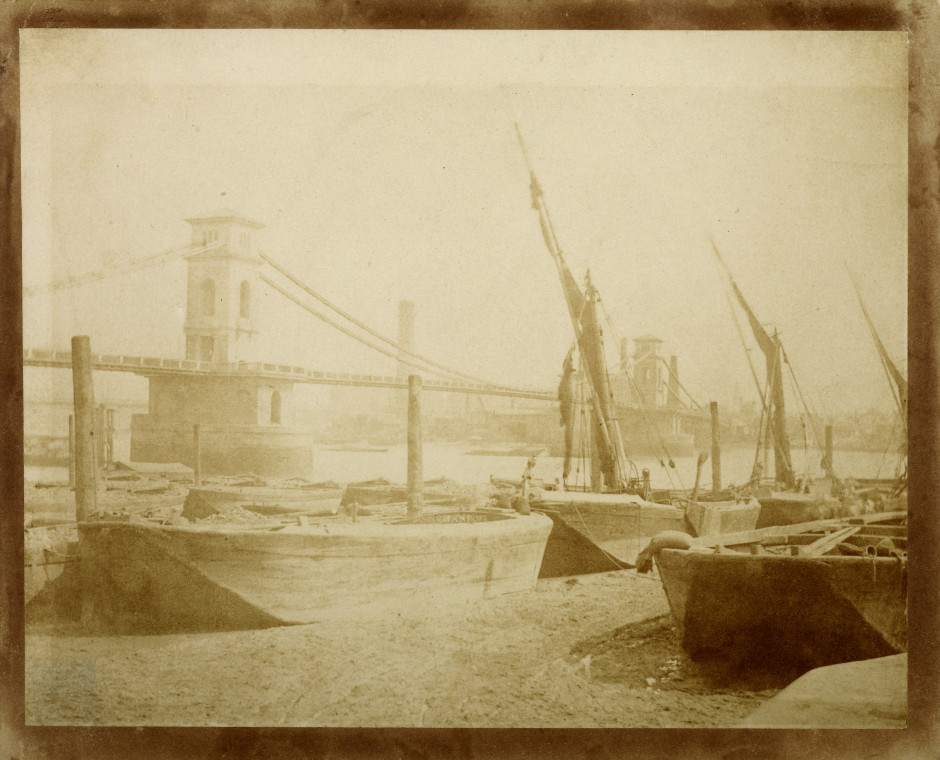
The print itself shows Isambard Kingdom Brunel's original Hungerford Bridge in 1845, the year it opened. (It would be demolished 15 years later to make way for a railway bridge.) 'By contrasting the old barges in the foreground with the Brunel's new iron bridge, Fox Talbot highlights the technological advances of the 19th century,' says Francis Marshall, Bridge's curator. Let alone his own technological advances in the photography world.
Why the difficulty in exhibiting the print? It's extremely fragile and faded due to its age. In order to minimise the risks to the picture, it will be displayed in strictly controlled lighting conditions; in order to see it, visitors will be invited to press a button to illuminate it, reducing its exposure to nnecessary light. It's also only going to be on display for the first month of the exhibition.
As for the rest of the exhibition, it uses a mixture of contemporary and historical artworks, photography, and film to chart the visual history of London. From Hungerford to Blackfriars, Westminster, Millennium, and Thomas Heatherwick’s Garden Bridge design, Bridge looks at how London’s bridges allow people to move around and experience the city.
The exhibition runs from 27 June to 2 November 2014, at the Museum of London Docklands. But the Fox Talbot print will only be on display for the first month. It's free to enter. The entire museum is well worth a trip, and I recommend indulging in a mojito in Rum & Sugar when you've finished.
Thoughts on the Sony World Photography exhibition
After my slightly disappointing press view of the Sony World Photography Awards exhibition, when I didn't have the opportunity to take in the photos, I made a return trip to Somerset House yesterday to rectify this situation. I had much more time to wander through both the East and West Wings, admiring the images and pontificating on the judges' choices. Visiting an exhibition that has cherry-picked from vast numbers of photos submitted from across the globe by both amateur and professional photographers gives you the chance to look for trends and fashions, garner some inspiration, and importantly, look through a window into other people's worlds. I enjoyed my saunter through the rooms and Sara Naomi Lewkowicz's l'Irs d'Or winning series Shane and Maggie stands out a mile. I loved Sophie Gamand's wet dogs, which won the portrait prize, Guy Martin's photos from the Gezi Square protests told a defiant story, and I was drawn to the deep and dark photos in Salvatore Di Gregorio's series An Old Fight, which won the sport prize.
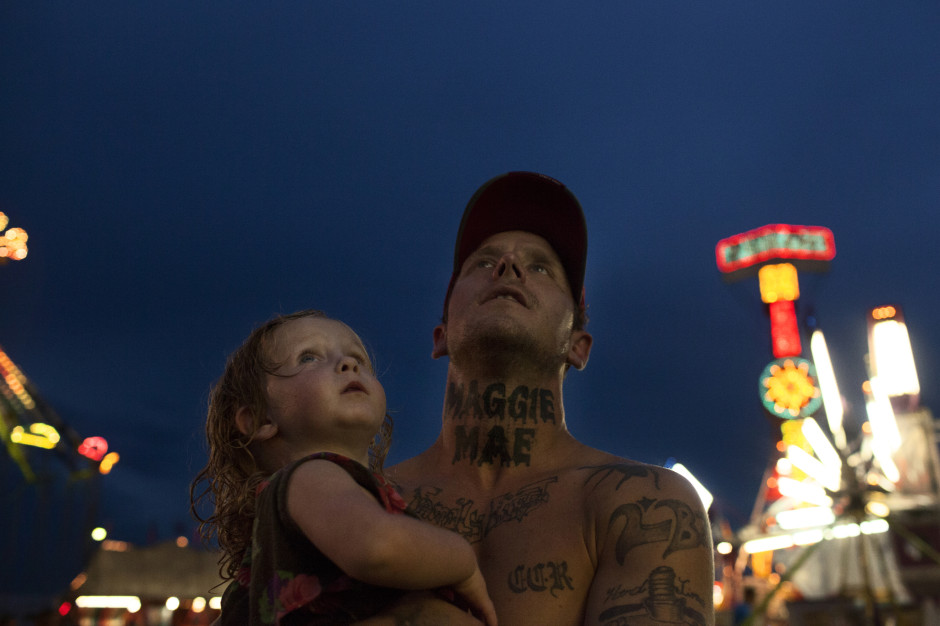
What, though, were my overwhelming thoughts and questions as I left the exhibition?
The professional category was dominated by black and white images. That is a comment made as neither praise nor criticism, merely as an observation. It is worth noting, however, that l'Iris d'Or winning series comprised colour images and that the photos that have stuck with me are those shot in colour. Maybe it is because they were my preferred shots, or perhaps it is because their colour makes them stand out amongst the monochrome, but it does pay to be different.
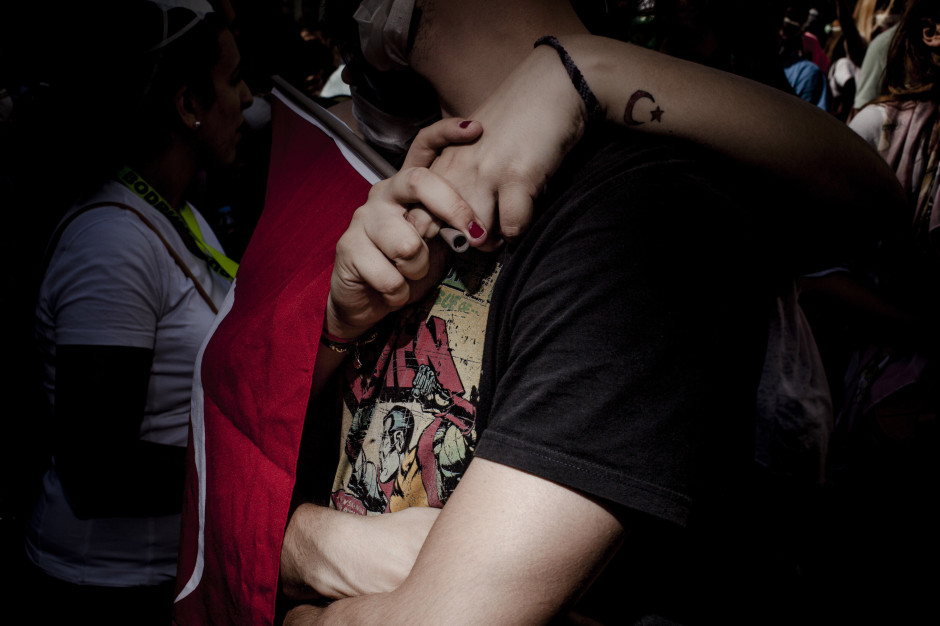
Writing of daring to be different, I think I might've reached Indonesian cow-racing photo saturation point. It's a stunning spectacle that produces stunning images, but there have been examples in the professional or open categories for at least the last three years. It's almost as if their inclusion has become obligatory. I'd appreciate being able to gaze upon something new in future years.
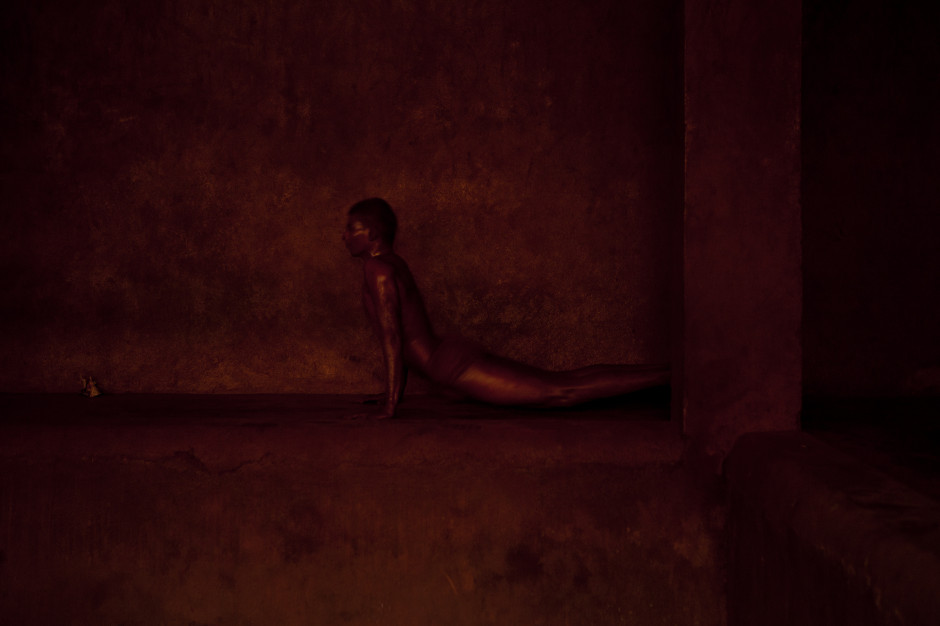
Finally, I was surprised by the profusion of manipulated images in the open category. From HDR, to composites, to painterly-type blending, it had it all, and this extended beyond the 'Enhanced' division, which is devoted to manipulated images. As the author of a book on surreal photography, this might be regarded as an unusual comment, but it does present some important questions. First, how much manipulation is too much manipulation? Second, to what degree is photo-manipulation now regarded as an acceptable element of photography? And consequently, at which point does a comeptition become one of photo-manipulation rather than photography? All of these are questions for another day, but ones to ponder.
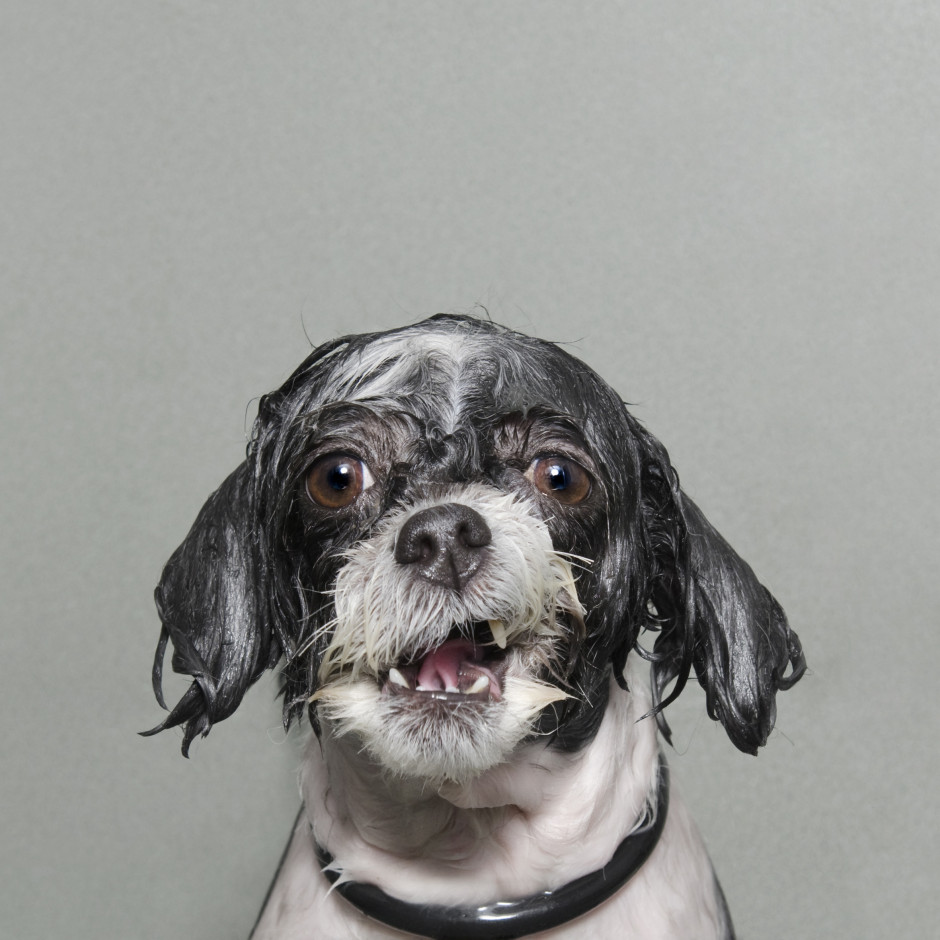
The exhibition runs until Sunday (18 May), and if you have to be in London or its environs, it's worth an hour or so to take it in. I'd love to know what you think.
Sony World Photography Awards exhibition, Somerset House, London, until 18 May 2014.
Photos exhibited in a botanic garden? It's IGPOTY at Lacock Abbey
If you're looking for something to do over the Easter break, how about combining a trip to the home of photography with a browse of some of the International Garden Photographer of the Year competition's winning images? It was at Lacock Abbey where William Henry Fox Talbot invented and completed the first photographic negative procedure. Now, Lacock Abbey is owned by the National Trust and between 5 April and 22 May 2014, it will be hosting a selection of the International Garden Photographer of the Year winning entries, outdoors, in its Botanic Garden.
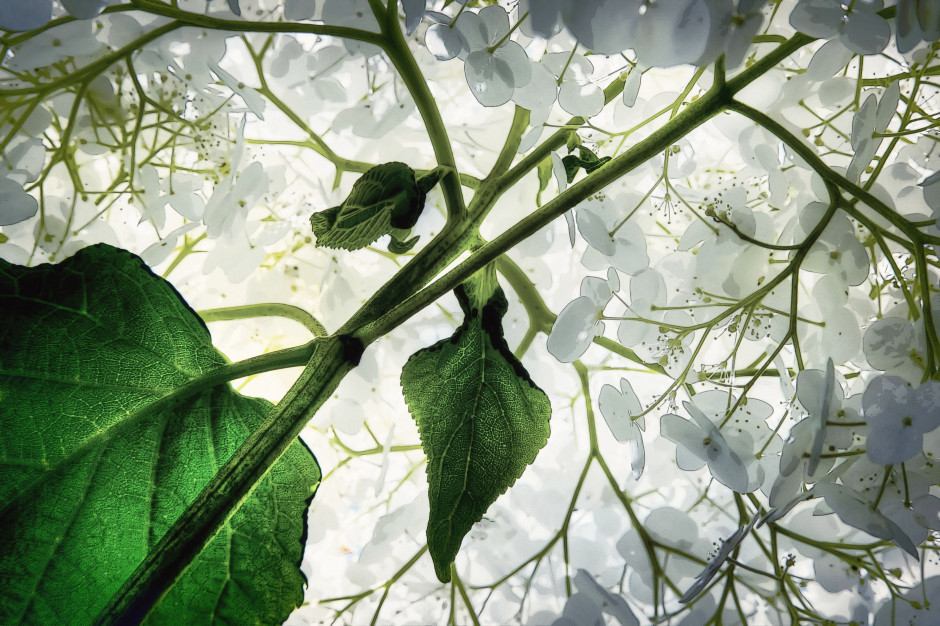
Although the competition is run in conjunction with the Royal Botanic Gardens, Kew and the main exhibition is held there each year, there's a rolling programme of touring exhibitions with Lacock Abbey being first on the list.
'Our wonderful fragrant flower borders are coming into bloom, so the exhibition will be a delight for all the senses really,' says Kristine Heuser, Marketing and Communications Officer at Lacock. 'Photography is very close to our heart, so we are delighted to have the exhibition back again this year.'
The exhibition is open between 10:30 and 17:30 everyday, 5 April to 22 May 2014. Normal National Trust admission charges apply, so please consult its website for details.
Only in England - now at the National Media Museum, Bradford
After its brilliantly successful run as the debut exhibition hosted at Media Space in the Science Museum, Only in England, Photographs by Tony Ray-Jones and Martin Parr, is now open at the National Media Museum in Bradford. Running from 28 March until 29 June 2014, it gives anyone who didn't manage to make it to London an opportunity to take in an exhibition that feels quintessentially English. The exhibition features 50 vintage prints as well as 50 previously unseen images from the Tony Ray-Jones archive, held by the National Media Museum. It was Martin Parr who helped to select these new prints from a selection of over 2,700 contact sheets and negatives. Martin Parr's works includes 50 rarely seen early black and white photographs from his series The Non-Conformists.
I enjoyed my morning moseying around the exhibition in London and while I did find it a little unwieldy to navigate, the photos were charming. My particular favourite, the image that made me smile and say 'Yep, only in England!' was Glyndebourne, 1967. All dressed up for the opera and having a champagne picnic with cows in the background? Of course it's Glyndebourne.
Opening times and visiting details are available on the National Media Museum's website. But the good news is that entry is free.
Oh, and if you'd like a little taster, we have an exlusive video of Martin Parr taking a look at some of Tony Ray-Jones' postcard collection!
Bailey's Stardust at the NPG
Bailey's Stardust, an exhibition of over 250 of David Bailey's portraits, opens today at the National Portrait Gallery, London, where it takes up virtually all of the ground floor.
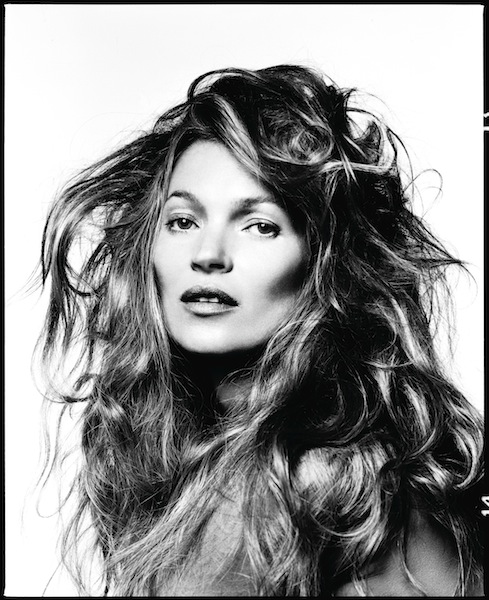
Organised thematically rather than chronologically, the exhibition is based on the notion of stardust: we all begin as dust and we all return to dust. Lesser known portraits will feature alongside some of Bailey's most iconic work, juxtaposing fame, fortune, and glamour with famine, poverty, and despair. The Rolling Stones, London's East End, Papua New Guinea, and East Africa in 1985: it's all there.
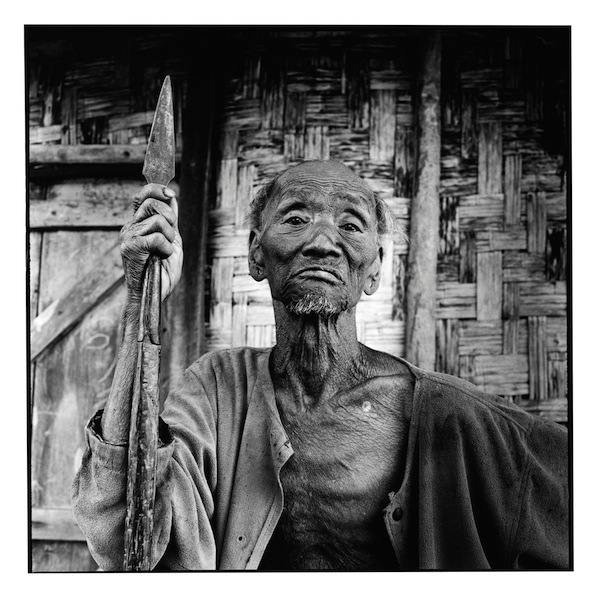
Bailey will be making new silver gelatin prints of his black-and-white portraits especially for the exhibition, showing off photographers, actors, writers, musicians, filmmakers, fashion icons, designers, models, artists, and people encountered on his travels.
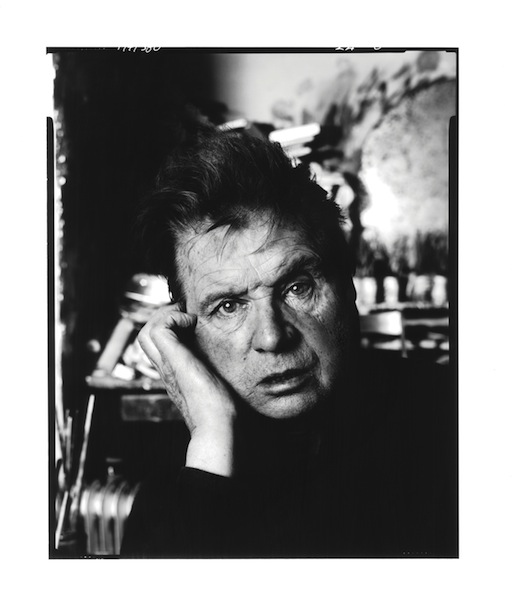
The exhibition, sponsored by Hugo Boss, runs from 6 Fenruary to 1 June 2014 at the National Portrait Gallery, London.
Wild Tales: an exhibition of images by Graham Nash
When you hear the name Graham Nash you'd be forgiven for your brain automatically leaping to The Hollies and He Ain't Heavy, He's my Brother, or jumping on the Marrakesh Express with Crosby, Stills and Nash. As singer/songwriters go, he's rather on the influential side. (He's managed to be inducted into the Rock and Roll Hall of Fame and the Songwriters Hall of Fame twice.) However, Nash owned a camera before owned a guitar and he's a bit of a photographer, too. Over the years he's amassed a portfolio of images that documents his life on the road and the people he's worked with along the way. To mark the release of his memoir, Wild Tales, an exhibition of his pictures and drawings, also called Wild Tales, is being held at the Proud Camden gallery in London.
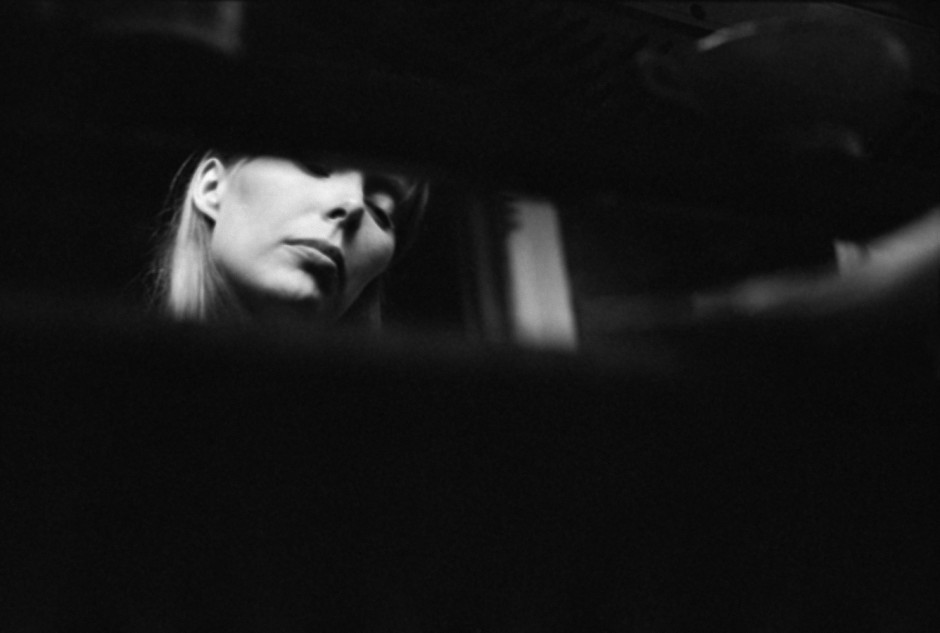
It gives you the opportunity to gaze at Joni Mitchell lost in a song, peer at Neil Young and he drives off into the distance after a recording session, and ponder his self-portraits.
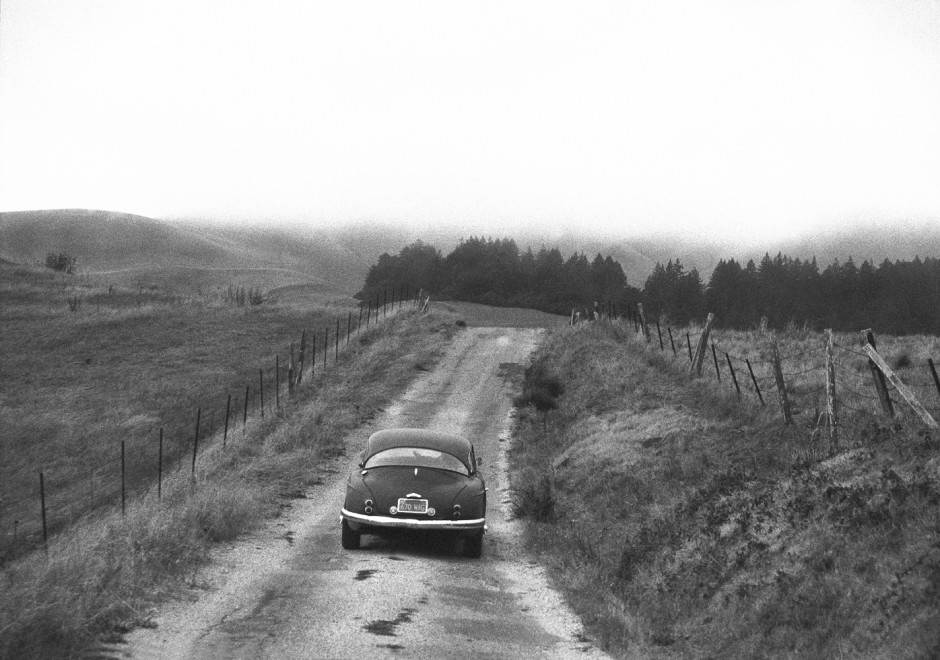
The exhibition is free to enter and runs from 9 to 20 October 2013 at Proud Camden, The Horse Hospital, Stables Market, Chalk Farm Road, London, NW1 8AH.
(Featured image 'Graham Nash, Self Portrait, Plaza Hotel, 1974' © Graham Nash)
Masterclasses from Sony
As part of the World Photography Awards, Sony is laying on a series of photography masterclasses at London's Somerset House on Friday 26, Saturday 27, and Sunday 28 April. Michael Wayne Plant will be demystifying photography, there will be session aimed at students looking to make photography their careers led by Magdi Fernandes, and the team from What Digital Camera are looking at the past, present, and future of full-frame photography. Sessions cost £5, but that's redeemable against the cost of entry into the Sony World Photography Awards exhibition.
Full details about timings and booking are on the WPO website.
Stands Alone open now!
Stands Alone is a new exhibition of images by Simone Novotny on display at the Geffrye Museum. It charts the transformation of Arsenal's old Highbury stadium into new housing–Highbury Stadium Square–and features several of the residents as they try to build a community in this new development. The exhibition is open now and runs until Monday 26 August 2013. Entry costs £5 (£3 for concessions and under-16s are free).
Stands Alone at the Geffrye Museum, 136 Kingsland Road, LONDON, E2 8EA.
Jim Goldberg wins Deutsche Börse Photography Prize
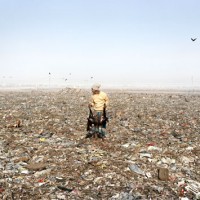
Jim Goldberg, who works for Magnum Photos, has scooped this year’s Deutsche Börse Photography Prize with his exhibition Open See, which documented the lives of immigrants and refugees from war-torn countries as they began anew in Europe.
He beat Thomas Demand, Roe Ethridge, and Elad Lassry to the £30,000 first prize at the awards ceremony last night. As runners-up, they each walked away with £3,000.
Brett Rogers, director of the Photographers’ Gallery which hosted the event, described Goldberg’s approach as ‘timely and inventive’. You can go look for yourself until Sunday 1 May as the winning series, together with the runners’-up pictures, will be exhibited at Ambika P3, at the University of Westminster.
Hot under the collar
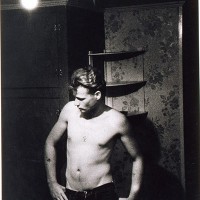
City Hall in Paris has managed to create a bit of a commotion. It’s gone and done something that just isn’t very French. (The Brit in me wants to say ‘just isn’t cricket’, but that wouldn’t really be cricket.) It has censored an exhibition. Yep, Paris, that bastion of artistic liberalism, has been told that Larry Clark’s retrospective—Kiss the Past Hello—at the Musée d’Art Moderne is unsuitable for under-18s.
Now, Clark has always cut close to the bone. (He was the director of the 1995 film Kids, let us not forget.) His photographs are gritty, explicit, and provocative. I’d even describe some of them as stomach-churning. But they’re mostly images of under-18s. I can’t claim that these photographs are especially representative of my teenage years, nor those of my friends (I definitely wasn’t pregnant and addicted to heroin at 16), but they do portray the lives of some teenagers. So part from their intrinsic brutality, are they actually that shocking for under-18s?
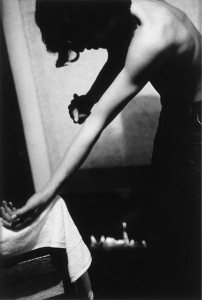
Untitled, 1971. (Courtesy of Larry Clark, Luhring Augustine, New York and Simon Lee Gallery, London )
One of my friends pointed out that if you want shocking or potentially exploitative, you only have to flick through a newspaper or turn on the evening news. It isn’t as if young people are cocooned from obscenity, drug abuse, violence, or sex and that this exhibition is exposing them to some previously unknown of unvisited horror. This is, or was, someone’s—many people’s, in fact—reality.
As my Ma, who is some sort of bastion of social liberalism herself, put it: ‘When you were 15 I’d rather that you were hanging around a gallery than doing things with boys in the backs of cars. Besides, the pictures hardly glamourise taking drugs or having sex.’ Oh no, these pictures hardly inspire you to shoot up in a dingy council flat in a dodgy area of Brixton. They probably do the exact opposite, in fact.
Speaking of achieving the exact opposite, there’s nothing more attractive than forbidden fruit, is there? How many under-18s would’ve attended the exhibition if it weren’t age-restricted and how many are now looking up Larry Clark on that there intergoogle-fandango, especially after Liberation emblazoned its front page with a slightly raunchy image from the collection on Thursday? In 1960, the publishers Penguin were taken to court on ground of obscenity for publishing Lady Chatterley’s Lover. Which book shot to the top of the best sellers’ list? Lady Chatterley’s Lover.
Kiss the Past Hello runs from from 8 October 2010 until 2 January 2011, at the Musée d’Art Moderne, 11 avenue du Président Wilson, 75116, Paris.
Astonishing astrophotography
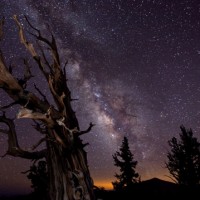
I always thought that stargazing was best done in the desert, immersed in blackness, but the winners of the National Maritime Museum Astronomy Photographer of the Year awards have brought beautiful glimpses of the heavens to an exhibition at the museum in Greenwich. And not all these celestial images were shot on barren tundra, either.
The museum announced the winners of its annual competition this morning, and the exhibition—featuring all of the entries—runs from today until 27 February next year. Even better? Entry is free. But if you can’t make it to Greenwich, here’s a peek at the overall winner to whet your appetite.
Overall winner: Blazing Bristlecone, by Tom Lowe
To see all the winners, head over to the National Maritime Museum’s website, or of course visit the exhibition.
Astronomy Photographer of the Year exhibition runs from 10 September 2010 to 27 February 2011, 10:00 to 17:00 daily, at the National Maritime Museum, London, SE10 9NF.
Katie Cooke: Balancing Act
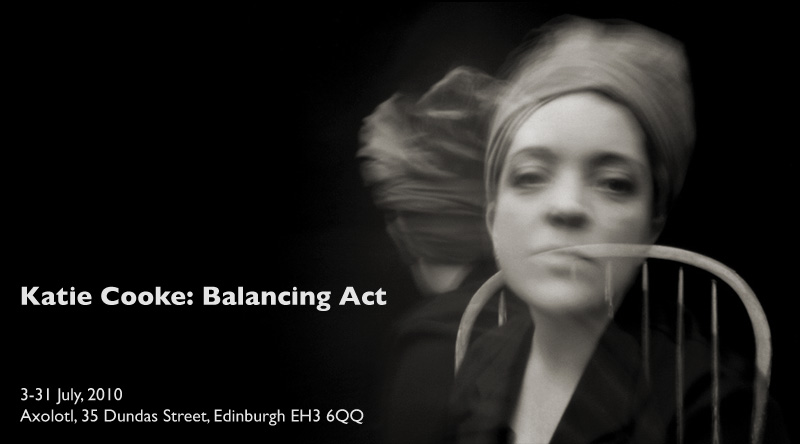
For those of you who are fans of Katie Cooke‘s pinhole photography you’ll be pleased to know that she has a new exhibition opening in Edinburgh on 3 July 2010. If you’re not familiar with Katie’s work, you should probably check her out.
Balancing Act is a series of seventeen silver prints of long exposure pinhole self portraits. Taken in 2006 and 2007, the pictures document Katie’s gain, loss, and regain of her ability to stand in between two major surgical procedures.
The exhibition runs from 3 to 31 July at the Axolotl Gallery, 35 Dundas Street, Edinburgh EH3 6QQ.







